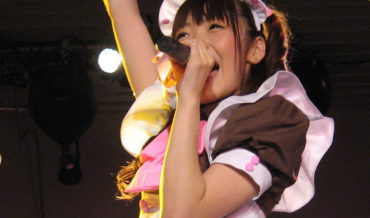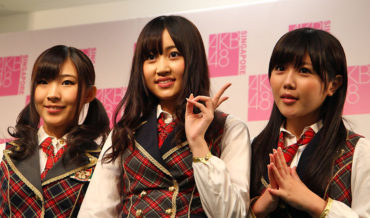Associate Professor, Modern Japanese Studies Program, Hokkaido University
The concept of effacement draws analytic and methodological attention to the counterspectacular: how concealment, blurring, masking, and muffling contribute to the production of value. This attention to effacement serves as a critical corrective to the tendency in media and cultural analysis to foreground spectacular presences and events, suggesting an alternative path toward the critique of the spectacle (Debord [1967] 1995). Scholars have identified the significance of largely hidden phenomena, such as infrastructures, platforms, databases, and institutional arrangements (Larkin 2013; Steinberg 2019; Azuma 2009; Marx 2012). Somewhat different, though related, a second way of exploring the counterspectacular is to examine phenomena that are “hidden in plain sight.” This second approach—an approach emphasized in this entry—considers acts of effacement as patterned, structured processes that are themselves an object of public attention and commentary.
The critical potential of the concept of effacement for an analysis of media culture is best illuminated by unpacking the different meanings of “masking” encoded in the concept of “persona” (prosopon; Mauss 1985). On the one hand, persona is a mask that “presents” the wearer. As P. David Marshall (2010) convincingly suggests, contemporary media culture places great emphasis on the “promotional” value of “self-presentation,” or “self-production.” The management of persona has become a “rubric and template” of media practice whose effects radiate from “celebrity culture” to the society at large through online platforms: “self-production is the very core of celebrity activity and it now serves as a rubric and template for the organisation and production of the on-line self which has become at the very least an important component of our presentation of ourselves to the world” (Marshall 2010, 39). Persona-as-mask, then, is a carefully constructed window through which ordinary people now must negotiate their authenticity and their multiple presences vis-à-vis the public at large as well as interpersonally. It is a technology of presence and embodiment that constructs a self or selves, one’s other face.
On the other hand, persona is also a mask that hides the wearer, a technology of disembodiment that creates the face of another, indexing a “character” separate from the wearer. In this sense, rather than a window of “presentation,” persona-as-mask is an occluding wall separating the effaced animator and the animated character, a self and “a not-self” (Goffman 1974, 535). Goffman’s expression “not-self” occurs in his discussion of “figure,” the “configuration” of a gap between the animator and the animated figure; at one point he suggests “character” as an alternative term (ibid., 523). Specifically, not-self illustrates a type of configuration “through which an individual acts out—typically in a mannered voice—someone not himself, someone who may or may not be present” (ibid., 534, emphasis added; see also Manning and Gershon 2013).
Such a gap emerges at times as a problem. For example, Marshall discusses the “split” between first-person and third-person narration in celebrity SNS posts. The failure to manage such a gap between two personae may cause “a giant sense of betrayal” on the part of the fans (Marshall 2010, 44). In other cases, however, such a gap is precisely a desired result or an expected state of affairs. The “character”-driven logic in Japanese popular culture, for example, emphasizes the “autonomy” of fictional characters that grants characters an agency and realness separate from and irreducible to the human agents who animate them (Itō 2005; see also Galbraith 2009). In this logic, the separation is an achievement of the work of “animation” “breathing life” into them (Silvio 2010). In cosplay, for example, costumes are a technology of effacement qua characterization, an “apparatus of anonymization” (tokumei-ka no sōchi) and “layering” (reiyā-ka) (Tanaka 2012, 244), which creates and sustains a separate layer for the character (a not-self), a being into which “life” may be projected.
The logic of effacement-as-characterization, along with the sense of “hidden in plain sight,” is most straightforwardly observed in voice acting, a facet of popular culture that has so far largely escaped scholarly attention. Through a multiplicity of “voice-work” (koe no shigoto), voice actors in the Japanese context, or seiyū, contribute their “typically mannered voice” of characterization to the production of various media products and experiences that constitute the general media ecology of popular culture, or the “media mix” (Steinberg 2012; Galbraith and Karlin 2016). Their work includes voice acting for anime and game characters, dubbing for foreign-language films, and voiceover narration for television commercials and programs. What unites all these varieties of voice-work is the “acousmatic” separation of the voice and the body, reflecting a rather straightforward practical condition of the media content that features their work: Their human visibility is subtracted. Seiyū’s voice-work is effacement-work by default.[1]
At the core of this work of effacement is an art of the counterspectacular.
At the core of this work of effacement is an art of the counterspectacular. As voice actor Hayashibara Megumi plainly puts it: “Well, you’d be taken aback and confused if you saw a close-up of my face in a recording studio on the corner of the screen while watching an anime, like those screen-within-screens in variety TV shows.”[2] In a similar spirit, voice actor Onosaka Masaya makes a passing but pointed observation during his radio show that the casting of non-seiyū celebrities—idols, singers, comedians, actors, etc.—as voice actors in many of Studio Ghibli’s anime productions makes it “difficult to focus” on the characters and the story due to the lack of skills on the part of these celebrities to sufficiently efface their (already spectacular) celebrity persona.[3] Anime simply does not work, as anime, when human visible presence interrupts it. Or even when such interruption happens (in rare cases), the fact that it is interpreted almost invariably as an attempt at artistic experimentation with the very genre of anime plainly indexes the effacement of human visibility as the default condition of anime texts.[4]
This focus on effacement is best encapsulated by the Japanese subcultural idiom of naka no hito (person-inside), referring to seiyū, often used in the ritualized expression of a suspension of disbelief: naka no hito nado inai! (No way there’s a person inside!). This familiar and playful expression configures the character as a hollow body, and the seiyū as a human operator who hides her body in its interior to animate it from inside. It is worth noting that the idiom, in its further metaphorical usage, emphasizes the sociotechnical relation of operation, similar to what Latour calls “delegation” (1992, 225), which may have nothing to do with voice nor acting. For example, a person or persons managing a corporate Twitter account are characterized as a naka no hito of the account, or a team of web designers are said to be a naka no hito of the website. More generally, the phrase indicates agentive forces of “backstage” (urakata), hidden behind, or “inside,” the outer manifestation they create and sustain.
An anime or game character is a figure to which numerous background forces of animation are delegated, seiyū being but one among them, along with others such as character designers, game programmers, and in-between animators, while each of these forces has their own unique curriculum vitae of animation, a unique characterography (à la “discography”). However, due to the special relationship the voice has with human corporeality, as well as its affordance as a narrative resource (that is, as meaning-carrying speech), seiyū are peculiar among these forces, embracing both the “staff”-like quality (the normal sense of urakata) and the “cast”-like quality, as normally credited to them, simultaneously. Seiyū thus index an interstice between the realness of the human voice in the actual or “3-dimensional” world and the realness of the character voice in the fictional or “2-dimensional” world, inviting a playful interpretation of their existence as “2.5 dimensional.”
The career of Hayashibara Megumi, perhaps one of the most distinguished seiyū in the culture of voice acting today, epitomizes this interstitiality of voice acting made possible by complex processes of effacement. She has garnered high respect from her colleagues and her fans due not just to her acting virtuosity but also to her principled dedication to the art of voice acting. She has consistently argued that the defining characteristic of voice acting is an art of urakata, backstage. For her, voice acting hinges on an “aesthetics of the shading” (kage no bigaku) (Hayashibara 2016, 9).
Hayashibara’s art of voicing is often likened to the work of mediation performed by itako, spirit mediums in northern Japan who channel and speak in the voices of the dead (see Ivy 1995). The appellation itako seiyū is often used by fans to describe Hayashibara’s extraordinary ability to summon the voice of her characters. She herself has used the phrase to explain her work. She depicts the work of this mediation as a process of “lending my vocal organ and body to the character so as to let the character speak” while at the same time “keeping my own intentionality intact.”[5] As implied by the phrase “letting the character speak” (kyarakutā ni shabette-morau), her work of characterization aims to displace the agency of voicing from the actor to the character and make the actor a hidden channel of the character’s voice.[6] In a process similar in structure to spiritualist séances, Hayashibara’s characterization allows the autonomy of characters (not-self) to be communicated to the audience by actively “not-communicating” her own “self,” that is, through the work of effacement (Nozawa 2016).
On the other hand, Hayashibara’s aesthetics of effacement must be understood in relation to the tension it has with the historical context of what is known as the “seiyū boom” of the 1990s, which significantly expanded the societal recognition of voice acting, especially anime voice acting, and which in effect celebrified seiyū as “idol seiyū.”[7] In the 2016 special issue of Seiyū Premium (a seiyū fan magazine) on the topic of the 1990s boom, the magazine editors note that “looking back at various anime-themed publications from early 1990s, it is surprising to find the dearth of stories regarding seiyū. [. . .] Photographic images of seiyū were featured only for a limited portion of advertising pages” (Seiyū Premium 2016, 22). From the mid-decade onward, however, articles and columns on the “seiyū boom” began to circulate more widely, even in general interest publications. The decidedly theatrical discipline epitomized by the earlier generation of seiyū gave way to a heterogeneity of entertainment work that younger seiyū were increasingly expected to perform, mostly extraneous to voice acting per se, such as modeling for photobooks and serving as a television and radio personality. The editors suggest that by the end of the 1990s “seiyū were ceasing to be the urakata of anime” (ibid.). Meanwhile, voice actor Iwata Mitsuo observes in this idolification of seiyū—a process which continues to this day—the shifting pattern of consumption from voice-work “content” (anime, games, drama CDs, etc.) to the “experience” of sharing intimacy with seiyū (Iwata 2017, 93–94).[8]
Hayashibara was at the center of this transformation that she, in effect if not by intent, helped bring about through her voicing of some of the 1990s iconic anime characters, in particular Ayanami Rei in Neon Genesis Evangelion. Due in large part to the enormous, societal-level fascination with Ayanami, Hayashibara, as Ayanami’s naka no hito, started being pulled into the promotional discourse of contemporary celebrity culture. Not only was she frequently called upon for interviews and requested to comment upon the character and the story of Evangelion, she also received numerous invitations to participate more regularly in televisual culture as herself. In short, she was demanded to “present” herself as a spectacular media image. Her counterspectacular art paradoxically activated a media logic of the spectacle. Within the profession of voice acting, she also found herself in a strange position in the emergent culture of seiyū idols (among whom she herself was often counted, despite her protestation), a tension she expresses in the following spatial schematic: on her “right side” were her great predecessors in voice acting from whom she was trying to learn the art, but on the “left side” were attractive young seiyū idols who could not even recite words properly (Hayashibara 2016, 14).
But Hayashibara has consistently refused such invitations to the spectacle of celebrification. She agrees to appear on television only if such exposure is to serve the goal of “introducing the wonderful work of voice acting” to the public, hoping to rectify the still-stigmatized status of the field of anime and gaming (ibid., 8–10). For her, not only does the celebrification of seiyū not help redeem the general underappreciation of seiyū as a profession, it may even present a threat to the art of effacement-as-characterization as the fundamental condition of seiyū’s voice-work.
While the aesthetics of effacement seems thus increasingly overwhelmed by the modality of celebrification, however, it is crucial to keep in mind relatively stable structural factors that still remain central to voice acting. For example, the phrase kaodashi no shigoto (face-exposing work) is consistently used to denote the types of work that require seiyū to reveal their face in public—promotional events, music and stage performances, magazine photoshoots, etc. That kaodashi remains a marked category despite the wide visibility of seiyū’s faces in media today, which speaks to the underlying belief that their default (unmarked) media contribution is still defined by processes of effacement. For example, voice actor Mizuki Nana, belonging to a generation younger than Hayashibara’s, is also an enormously successful singer in her own right (singing in her own name), who has performed at major concert venues. And yet, Mizuki still defines herself, and is defined by others, as “seiyū” due to her continued non-kaodashi work in anime and game production and voiceover narration.[9]
Seiyū’s effacement thus indexes a curious gap in celebrity culture. In contrast to idols, singers, comedians, and other participants of the culture operating under the “presentational” logic of exposure and its management, seiyū are a peculiar type of celebrity. While they are as much part of the promotional regime of celebrity culture as these other celebrities, the practical condition of voice-work—the acousmatic separation—continues to define them as seiyū.[10] They are constituted by an ability to go unnoticed at the very moment when their work counts. Their concealment is also peculiar in another sense, in that it does not produce a secret that invites a desire to uncover it. The typical observation that anime and game fans feel disenchanted when they discover the face of the seiyū who play their favorite characters is based on an insufficient understanding of the mechanism of characterization as a work of effacement. The central import of the fan phrase “No way there’s a person inside!” lies in its utter playfulness: Everyone knows there is a person inside, who that person is, and what he or she looks like. The personality of Hayashibara, her “face,” is not a mysterious secret at all. The mystery, rather, lies in her seemingly impossible power to draw attention to the characters she animates rather than to herself while, however, “preventing viewers from forgetting even for a moment that an alien animator is at work” (Goffman 1974, 534).[11]
The power of the analysis of effacement lies not (simply) in exposing what is hidden, converting the imperceptible into a regime of meanings, or turning mystery into knowledge. Rather, it lies in paying heed to conditions and effects on the way in which people and institutions work hard to achieve and control a gap in knowledge, sociality, and perception. The foregoing analysis of Japanese voice acting exemplifies one way in which the concept can be productively used for studies of media culture. The analysis is also a good antidote against the overly oppositional view of effacement: concealment vs. revelation, encryption vs. decryption, opacity vs. transparency, and so forth. Rather than this “either/ or” view, the analysis of effacement should be open to consider partial or temporary obfuscation, gradience in degrees of accessibility, or overlap between presences and absences. Seiyū’s interstitial quality as both “cast”-like and “staff”-like attests to this.
By the same token, it is not necessary to presuppose that effacement is an irreversible process. It is true in some cases that once some effaced state of affairs is uncovered, it remains perpetually exposed or exposable. However, it is analytically more encompassing to explore effacement in contingent processes of discovering and covering, “figuring” and “grounding” (in a gestalt psychology sense). For example, legal claims for the “right to be forgotten” may be seen as indexing an ongoing struggle over such contingency. If the well-known internet meme “what has been seen cannot be unseen” speaks of the irreversible sense of shock induced by a face-to-face encounter with an affectively powerful image, the contingency of effacement indicates the disorienting affect of wonder and pleasure, like that strange affect provoked by viewing the topologically “impossible” space in an Escher painting.
Notes
- Schaeffer (1967) defines “acousmatic” sounds as those “one hears without seeing their sources” (quoted in Chion 1994, 71). ↑
- “Kaigi,” Hayashibara Megumi Official Blog, April 14, 2017, https://lineblog.me/megumi_hayashibara/archives/379525.html (accessed September 1, 2019). ↑
- “Onosaka Masaya no Jūnen Tsuzuku Rajio” 14, JOCR Anitama Dot Com (Kobe: Radio Kansai, July 3, 2015). ↑
- Consider, for example, the “Episode 26 Live Action Part” of the theatrical version of Neon Genesis Evangelion (released as part of the 2003 DVD box), or some of the episodes of Pop Team Epic (2018) that visibly present the body of voice actors. Also, while the avoidance of human visibility continues to be a defining feature, the use of photorealistic images of actual-world landscapes and objects (that is, relatively “unmoving,” nonhuman elements) has become an increasingly common technique in anime work. ↑
- “Seimeiryoku: Hito ga Nanto Ittemo ‘Sukinamono wa Suki,’” November 29, 2010, http://www.zakzak.co.jp/people/news/20101129/peo1011291511000-n1.htm (accessed September 1, 2019). ↑
- More generally, seiyū and their fans see spiritualist idioms, for example “possession” (hyōi), as particularly effective in their reflexive understanding of voice acting as an art. See Connor (1999) for discussion of similar processes of voicing and agency displacement in spirit mediumship. ↑
- There are several such “booms” preceding and following the 1990s. The popularization and “idolification” of seiyū is a contingent, complex process occurring over many decades, which has yet to attract sustained scholarly attention (but see Naito 2017). ↑
- One institutional response to the diversification of seiyū’s labor today is observed in the establishment of curricula such as “seiyū idol courses” at seiyū vocational schools; see, e.g., Yoyogi Animation Academy, https://www.yoani.co.jp/course/idol/ (accessed September 1, 2019). ↑
- By the same token, however, Mizuki’s “face-exposing” work has also invited the criticism that she neglects voice acting. Voice actor Shiina Hekiru (another central figure in the 1990s “boom”) experienced similar criticism when she shifted her focus to a singing career. ↑
- For the “professionalization” of seiyū—a crucial issue that, however, exceeds the parameter of discussion in this entry—see, e.g., Kobayashi 2015; Naito 2015, 2016. ↑
- Consider also “public secrets” (Newell 2013), or “active not-knowing” (Taussig 1999, 7), where the unwillingness to disclose publicly what is in fact widely known in a community, or a committed decision not to do so, creates various sociopolitical effects. ↑
References
Azuma, Hiroki. 2009. Otaku: Japan’s Database Animals. Translated by Jonathan E. Abel and Shion Kono. Minneapolis: University of Minnesota Press.
Chion, Michel. 1994. Audio-Vision: Sound on Screen. New York: Columbia University Press.
Connor, Steven. 1999. “The Machine in the Ghost: Spiritualism, Technology and the ‘Direct Voice.’” In Ghosts: Deconstruction, Psychoanalysis, History, edited by Peter Buse and Andrew Stott, 203–25. London: Palgrave Macmillan.
Debord, Guy. (1967) 1995. The Society of the Spectacle. Translated by Donald Nicholson-Smith. New York: Zone Books.
Galbraith, Patrick W. 2009. “Moe and the Potential of Fantasy in Post-Millennial Japan.” Electronic Journal of Contemporary Japanese Studies 5 (October 31). https://www.japanesestudies.org.uk/articles/2009/Galbraith.html.
Galbraith, Patrick W., and Jason G. Karlin, eds. 2016. Media Convergence in Japan. Ann Arbor: Kinema Club.
Goffman, Erving. 1974. Frame Analysis: An Essay on the Organization of Experience. New York: Harper and Row.
Hayashibara Megumi. 2016. “Interview with Hayashibara Megumi.” Seiyū Premium. Tokyo: Schola Magazine.
Itō Gō. 2005. Tezuka izu deddo: hirakareta manga hyogenron e. Tokyo: NTT Shuppan.
Ivy, Marilyn. 1995. Discourses of the Vanishing: Modernity, Phantasm, Japan. Chicago: University of Chicago Press.
Iwata Mitsuo. 2017. Seiyūdō. Tokyo: Chuokoron Shinsha.
Kobayashi Shō. 2015. “Seiyū shiron: ‘anime būmu’ ni miru shokugyō seiyū no tenkanten.” Animēshon Kenkyū 16, no. 2: 3–14.
Larkin, Brian. 2013. “The Politics and Poetics of Infrastructure.” Annual Review of Anthropology 42, no. 1: 327–43.
Latour, Bruno. 1992. “Where Are the Missing Masses? The Sociology of a Few Mundane Artifacts.” In Shaping Technology/ Building Society: Studies in Sociotechnical Change, edited by Wiebe E. Bijker and John Law, 225–58. Boston: MIT Press.
Manning, Paul, and Ilana Gershon. 2013. “Animating Interaction.” HAU: Journal of Ethnographic Theory 3, no. 3: 107–37.
Marshall, P. David. 2010. “The Promotion and Presentation of the Self: Celebrity as Marker of Presentational Media.” Celebrity Studies 1, no. 1: 35–48.
Marx, W. David. 2012. “The Jimusho System: Understanding the Production Logic of the Japanese Entertainment Industry.” In Idols and Celebrity in Japanese Media Culture, edited by Patrick W. Galbraith and Jason G. Karlin, 35–55. London: Palgrave
Mauss, Marcel. 1985. “A Category of the Human Mind: The Notion of Person; the Notion of Self.” Translated by W. D. Halls. In The Category of the Person: Anthropology, Philosophy, History, edited by Michael Carrithers, Steven Collins, and Steven Lukes, 1–25. Cambridge: Cambridge University Press.
Naito Toyohiro. 2015. “Nihon ni okeru “seiyū” towa nanika?: eigashi no shiten kara.” Gakushuin Daigaku Jinbun Kagaku Ronshū 24: 317–47.
Naito Toyohiro. 2016. “Anime jidai no ‘seiyū’ no yakuwari to sono media teki kōzō no henka: nihon ni okeru ‘seiyū’ towa nanika? (2).” Gakushuin Daigaku Jinbun Kagaku Ronshū 25: 333–65.
Naito, Toyohiro. 2017. “Sutāka’ suru seiyū: nihon ni okeru ‘seiyū’ towa nanika? (3).” Gakushuin Daigaku Jinbun Kagaku Ronshū 26: 131–73.
Newell, Sasha. 2012. The Modernity Bluff: Crime, Consumption, and Citizenship in Côte d’Ivoire. Chicago: University of Chicago Press.
Nozawa, Shunsuke. 2016. “Ensoulment and Effacement in Japanese Voice Acting. In Media Convergence in Japan, edited by Patrick W. Galbraith and Jason G. Karlin. 169–99. Ann Arbor: Kinema Club.
Schaeffer, Pierre. 1967. Traite des Objets Musicaux. Paris: Seuil.
Silvio, Teri. 2010. “Animation: The New Performance?” Journal of Linguistic Anthropology 20, no. 2: 422–38.
Steinberg, Marc. 2012. Anime’s Media Mix: Franchising Toys and Characters in Japan. Minneapolis: University of Minnesota Press.
Steinberg, Marc. 2019. The Platform Economy: How Japan Transformed the Consumer Internet. Minneapolis: University of Minnesota Press.
Tanaka Tōko. 2012. Medlia Bunka to Jendā No Seijigaku. Tokyo: Sekai Shisōsha.
Taussig, Michael. 1999. Defacement: Public Secrecy and the Labor of the Negative. Stanford: Stanford University Press.





